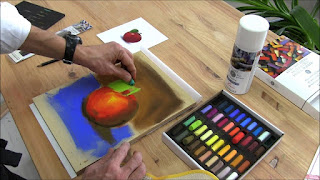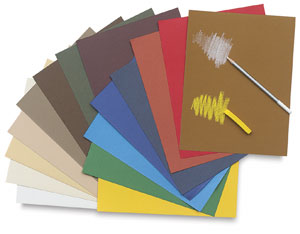Artists
need to implement the right techniques in pastel painting. The
techniques that we use in pastel painting vary from any other type of
painting. What are pastels? Pastels are pigments or colors used in
paintings. As the properties of pastels vary, we have to consider
different factors to create a masterpiece.
Choosing Material
Pastels
are available in different varieties, e.g. oil, hard, soft, pencil.
Each one of the pastels has different properties.
Tip:
You can prefer oil pastels as they comprise inert oil & wax as
additional ingredients.
Pastel
papers are of different types and are usually rougher than the paper
used in watercolor painting. Pastels do not stick to papers. This is
the reason why rough papers are used in painting.
Gathering Information
-
Material Properties
From
oil pastels to pastel pencils, their properties vary. You must
evaluate and explore qualities related to them.
-
Simple ways to distinguish materials
Take
a piece of paper and apply different types of pastels. This will help
to gain more information related to them.
-
Blend Pastels
Blend
different types of pastels to create unique impressions. Try blending
and creating unique & distinctive lines through colors. Such
experiments will provide you more knowledge and help to develop
skills necessary required for painting.
How to Paint with Pastels
-
Create a Layout
Think
of an idea. Take a graphite pencil & paper to create an outline
of your idea. If you think of an object, you can draw it on the
paper. A layout or outline will make your work easy and simple.
-
Choose Colors
Evaluate
your sketch and choose appropriate colors which are to be applied in
the outline. Implement a light touch and apply slowly to give it the
appropriate form. When you are sure, you can start creating definite
lines while painting with pastels.
If
you want to create a lighter background, you can apply white pastel
on the surface. If still, the background seems dark, you can apply
scrapers, and paint on the surface.
-
Add Layers
Once
you complete your picture or design, then, you can start applying
darker strokes of colors. This will make the picture more detailed
and realistic.
-
Blend to create effects
Till
now, you have followed the basic procedure to create art. To keep art
unique, appealing, detailed and realistic, you will have to work on
extra effects.
Tip:
Maintain the painting strokes random while adding swirling colors on
the picture. Keep in mind that the texture should be aligned. You can
also mix colors and start creating unique effects.
-
Add Finish
Now,
you have completed art and need to work on finishing works. You can
either use color shapers or fingers to add finishing to colors.
-
Fix the Painting
The
blending and surface of the painting can be damaged with a touch,
therefore, we must use fixatives. You can easily find fixatives in
art supply stores.
Now,
you can enjoy your art!
“Pastel
Art Prints” is a popular platform where you can get wonderful art
from renowned and award-winning Australian artists. The online store
offers landscape art prints,
animal art, beach art and art
forms on different subjects.
To choose the best art,
visit our website.









